Categories
Latest Updates
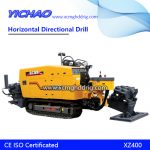
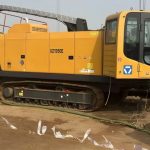
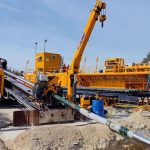
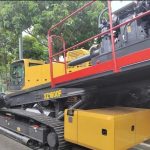
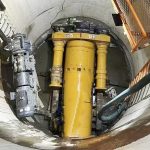
When the water supply pipeline passes through railways, highways and river valleys, certain measures must be taken.
When the pipeline crosses the railway, its crossing location, method and construction method shall strictly comply with the provisions of the technical specifications of the railway department for crossing the railway. According to the importance of the railway, the following measures shall be taken: when crossing temporary railways or general highways, or non main routes and the water pipes are buried deeply, casing pipes may not be set, but the interface of cast iron pipes shall be placed between the two tracks as far as possible, and lead joints shall be used. The steel pipes shall have corresponding anti-corrosion measures; When crossing an important railway or a highway with frequent traffic, the water pipe must be placed in a reinforced concrete casing. The casing diameter depends on the construction method. The diameter of the casing shall be 300mm larger than that of the water supply pipe during heavy excavation construction, and 600mm larger than that of the water supply pipe during pipe jacking construction. When crossing a railway or highway, the top of the water pipe shall be about 1.2m below the railway track or highway pavement. When the pipeline crosses the railway, inspection wells shall be set at both ends, and valves or drainage pipes shall be set in the wells.
When the pipeline crosses rivers and valleys, existing bridges can be used to erect water pipes or lay inverted siphons, or water pipe bridges can be built, which shall be selected according to river channel characteristics, navigation conditions, geological and topographic conditions of river banks, materials and diameters of river crossing pipes, and construction conditions.
The water supply pipe is most economical to cross the river under the existing bridge, and it is convenient for construction and maintenance. The water pipe is usually set under the sidewalk of the bridge.
The inverted siphon crosses from the river bottom, which has the advantage of concealment and does not affect navigation, but is inconvenient for construction and maintenance. One or two inverted siphons can be set, and valve wells shall be set on both banks. The top elevation of the valve well shall ensure that it will not be flooded in case of flood. There are valves and drain pipes in the well. The depth of inverted siphon top under the riverbed is generally not less than 0.5m, but not less than 1m within the scope of the channel line.
Inverted siphon is generally made of steel pipe, and anti-corrosion measures shall be strengthened. When the pipe diameter is small and the distance is short, cast iron pipe can be used, but flexible interface shall be used. The diameter of inverted siphon is calculated as the flow velocity is greater than the non silting flow velocity, which is usually smaller than the diameter of upstream and downstream pipes to reduce the cost, increase the flow velocity and reduce the siltation in the pipe.
When it is difficult to erect large-diameter water pipes under the bridge due to their heavy weight, or when there is no bridge available locally, water pipe bridges can be built to overhead cross the river. The water pipe bridge shall be of proper height to avoid affecting navigation. The overhead pipe is generally steel pipe or cast iron pipe. For the convenience of maintenance, the green lead joint can be used, and the socket type prestressed reinforced concrete pipe is also used. Exhaust valve shall be installed at the highest point of bridge crossing water pipe or water pipe bridge, and expansion joint shall be set at both ends of bridge pipe. Proper anti freezing measures shall be taken in frozen areas.
When crossing the river, the steel pipe itself can also be used as a load-bearing structure, which is called arch pipe. The construction is simple and convenient, and the supporting materials required for erecting the water pipe bridge can be saved. Generally, the ratio of rise to span of arch pipe is about 1:8~1:6, usually 1:8. The arch pipe is generally welded from a short pipe with a length of 1~1.5m. The welding requirements are high to prevent the arch pipe from sagging or cracking during hoisting. The arch pipe has supports on both sides to bear various forces acting on the arch pipe.
Realize “three no separation” of water leakage detection: no separation of pipe line materials; Regardless of pipe diameter; Regardless of the medium flowing in the pipeline, the horizontal positioning accuracy of the leakage point is ≤± 1m, the vertical positioning accuracy is ≤± 0.5m, and the excavation accuracy rate is ≥ 90%.
